In conversation with the artists of ‘Building Bridges’
Introducing again the artists who were part of the Building Bridge Project, we have asked them some questions, both about their work and the experience of interacting online with fellow artists from around the world...
Alejandro Zertuche Alejandro (1989, Monterrey, Mexico) graduated with a BFA from UANL and co-directs Venus Project. His work has been in exhibitions and festivals in more than 15 countries. His artistic practice often deals with autobiographical references that he links with an independent study of occultism and mysticism, exploring ritual through performance art, also experimenting with video, sound and installation.
How do you think that artists and art can build the will or strength, within societies and themselves, to recreate and bend reality from the chaotic nature that it has fallen into?
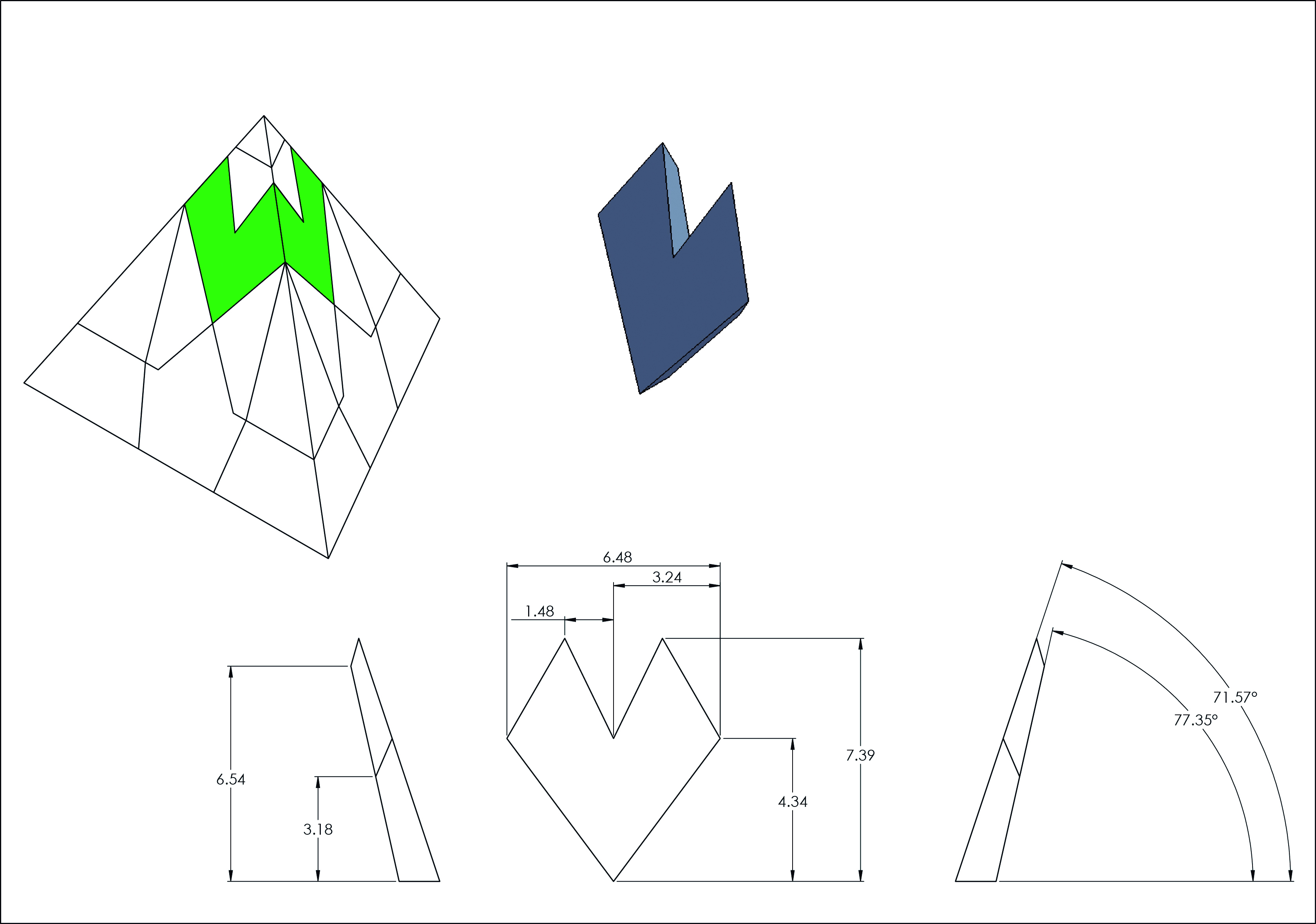
Contemporary artistic practices often become, and come from, other interests than just "creating art”. The intentions of each creator comes into play--social practices, architectural and even autobiographical works come close to "getting results" as if artistic research could become a science. In that sense I think Art can create change within the self and others. For a short answer: Yes.
How did the work you have created for the Building Bridges exhibition draws on, influences and/or challenges your thinking and practice as an artist?
Generally my practice is action-based. For the distance I had to think how to do something that could become an action without it being so. I came up with a manual, inspired by the performance instructions of the fluxus movement. In some way, this made me realize the potential of other kinds of works to still trigger "action" without me being in the mix.
------------------------------------------------------------------
Ashok Vish Ashok Vish is an artist whose practice includes work in film, video, and photography. In both his filmmaking and his photography, Vish analyzes the world through the lens of personal politics. His overriding objective for all of his projects has been to create narratives, whether linear or abstract.
What are the themes that you have found most interesting in your exploration of the two ancient Indian epic poems? And what themes do you think they might have in common with mythological narratives from other cultures?

The exquisite tension between Karma and Dharma lies at the very heart of the epic Indian poems Ramayana and Mahabharata. This tension really strikes a chord within me. The balancing act of what is the right thing to do is the essential dilemma of being human. In the epics, it is the gods who negotiate these fundamental human confusions like the dilemma of choice. In my work, the idea of gender transformation, or just questioning your gender identity, is very much at the heart of the aforementioned tension and dilemmas.
How did collaborating and being in dialogue with artists from other parts of the world inspire you?
The most exciting aspect about the Building Bridges project was taking part in it with thirteen other artists, from other parts of the world, while all communication took place virtually. This possibility in itself is inspiring. Interacting and exchanging ideas with so many diverse artists was eye-opening, because we really had the opportunity to discuss and even argue or disagree with one another. The premises of the project, respect and cross-cultural connections, are quite essential and very needed in present times, and I appreciate having been part of it.
------------------------------------------------------------------
Bhargav Barla Bhargav (1992 Visakhapatnam, India) received a Master’s in painting at Visva-Bharati University, and is currently pursuing a Master’s in Art Design and Performing Arts at Shiv Nadar University, Delhi. He uses photography as his primary tool, creating works that connect with his surroundings, thoughts and emotions. He has participated in exhibitions in Kolkata and Visakhapatnam.
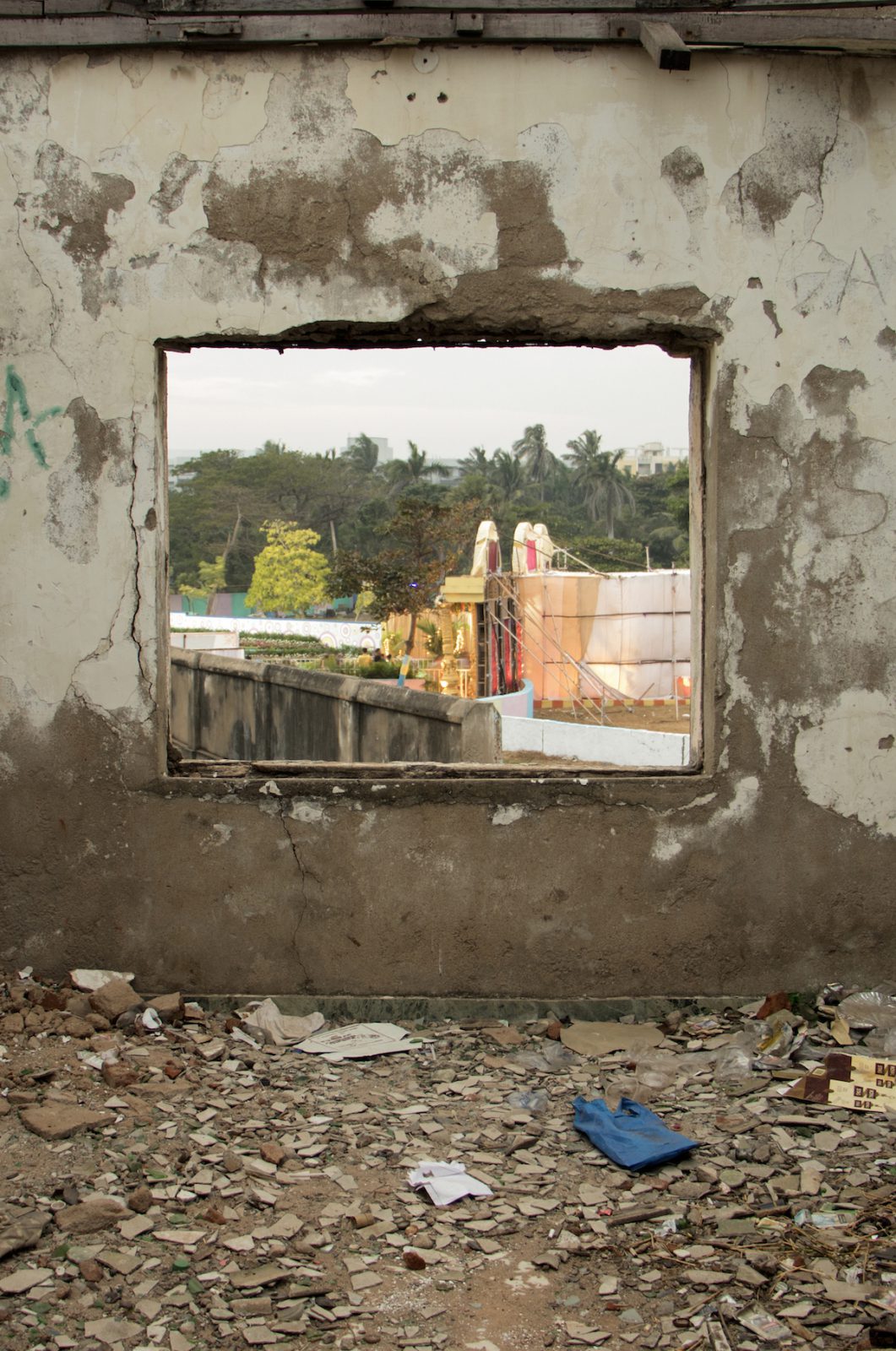
Your photos evoking landscapes of roads, pathways and unknown terrains, raise questions of where one is headed and why. How are you as an artist navigating your way? What questions and interests drive your work?
I believe few settings evoke a response or a mood in me. Certain settings inspire me to draw parallels with situations in my life or things I strongly resonate with. That inspiration makes me want to pursue something further.
Human behavior and responses to different situations also inspire me. I try to interpret how it relates to me, how I would respond to them, and how my interpretation generates curiosity. In a multicultural setup like India, the big and small differences are also inspiring.
How did collaborating and being in dialogue with artists from other parts of the world inspire you?
Interacting with them greatly influenced my thinking and how I will work form now on. This experience broadened my spectrum of how art is perceived and conceived. The way some of the artists are using the digital tools is inspiring. Each of their themes and how they correlate is very interesting. It makes me explore and ponder parallel themes resonating with me. The cultural difference between us also captured my interest. One of the things that I found most curious and inspiring is how different situations influence and affect us.
------------------------------------------------------------------
Dengke Chen Dengke is an Assistant Professor of Digital Arts at Stetson University. He received his MFA in New Media from Pennsylvania State University and his BA in Animation from China Central Academy of Fine Arts. His practice concentrates on new media art, 3D animation, computer games, illustration, and comic art.
The imagery at play in your work evokes disturbing issues of our times, and uses metaphor and altered realities to provoke. What inspires your work and what research and aesthetic strategies do you employ?
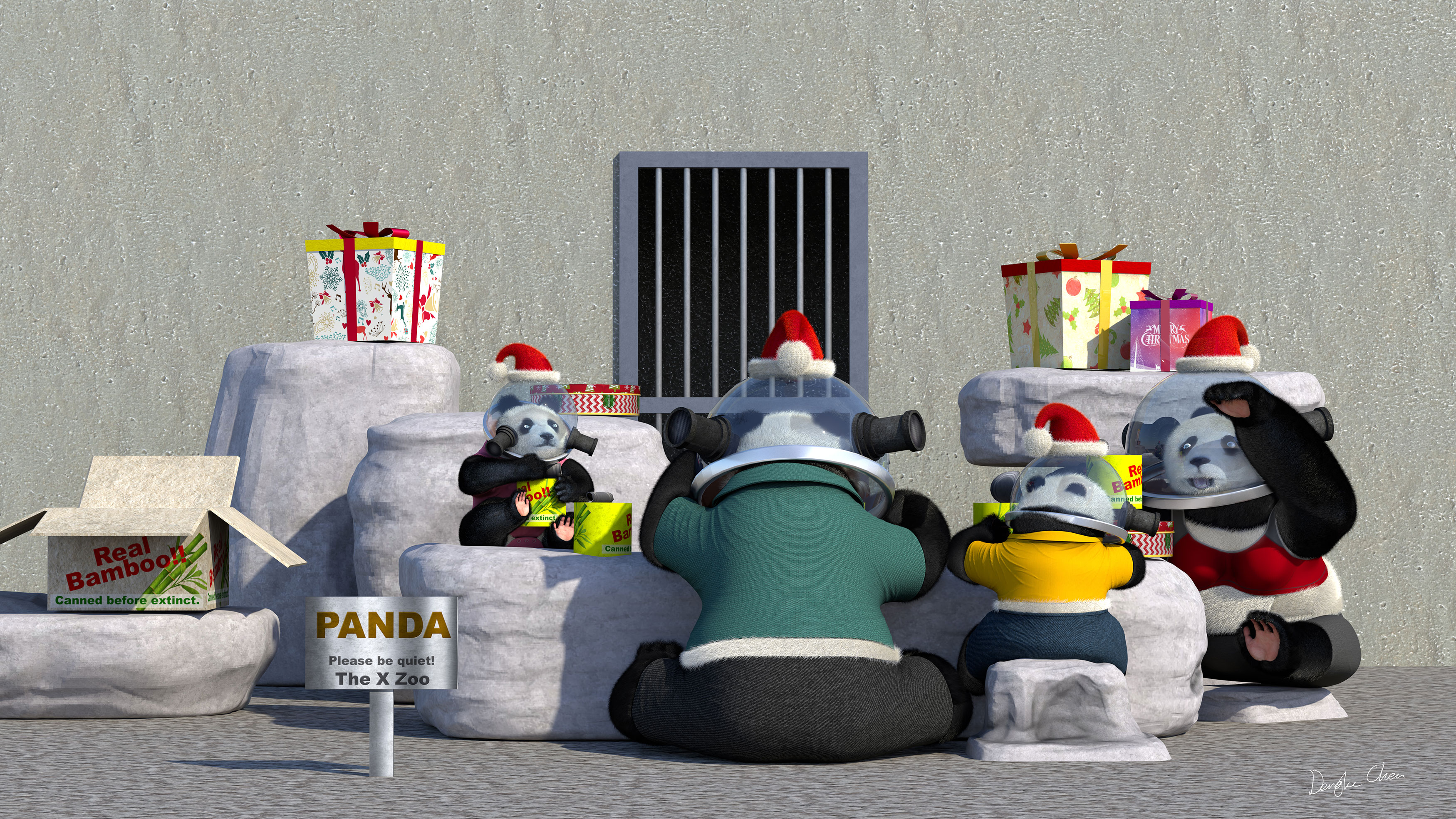
Inspired by historical photographs and paintings but within a contemporary and global context, I first created the illustrations with anthropomorphic characters. I then used BBC/CNN news as the visual reference to construct the game that tells the story from the animal’s point of view. Once I realized that my illustrations and games use different subjects as metaphors but address similar issues, I thought it would be great to connect them together via augmented reality, and the result looks profound.
How did the issues or themes brought up by the other artists affect your work?
In discussing environmental issues with other artists I came up with the idea of creating a new augmented reality piece 'Humanimal Kingdom'. Compare to my past works, that sorely reflected on issues concerning human society (what humans do to other humans), Humanimal Kingdom explores the byproducts of human presence (what humans do to the earth and all living beings on it). This idea is based on the global context of increasing infrastructure building in vital areas, altering the landscape and causing the disappearance of once-reliable wild game.
------------------------------------------------------------------
Jasmina Runevska Jasmina Runevska (1988), from Macedonia, is currently pursuing her Master's in Gender Studies, and has received her BA in Visual Arts and Comparative Literature. Her works move between gender issues, identity and memory through objects, sounds and words. She has been part of several workshops, exhibitions and residencies in Hungary, France, Turkey and Serbia.

Your work takes into account memory inscribed in and upon objects, opening opportunities to invent and reframe histories and identity. What are your strategies for moving beyond novelty in mining these associations?
Whether discovering a new place for old objects, or putting them in other visual contexts, coloring with a particular filter, or editing the conversation we are listening every day in different loops, those stories are becoming reframed and open to multilayered reading. The mining of these associations is left to the audience. Depending on their own experience, every object and every sound or word have a different referent, that everyone is re-reading with another memory, identity or expression.
How did collaborating and being in dialogue with artists from other parts of the world inspire you?
Being born in a somewhat limited artistic environment, due to the size of my country, I was pleased, relieved and encouraged to encounter the same issues facing other artists in my field. Meeting them re-enforced my ways and gave me a clear focus for the work at hand. Through the Building Bridges artists and their work, I managed to flourish and enrich the dialogue within me.
------------------------------------------------------------------
Kate McElroy Kate is an artist from Ireland, where she has participated in shows extensively, including her recent solo show ‘Effusion’. Her work examines the evolving states of the individual. The relationship between body and mind, and the self and the outer world, is embedded in McElroy's practice.
Thinking on today’s fast-paced societies and high-stress lifestyles that have become the ‘norm’ for many people, how do you think art can effectively promote introspection and tolerance towards others, to build a better, more empathetic society?
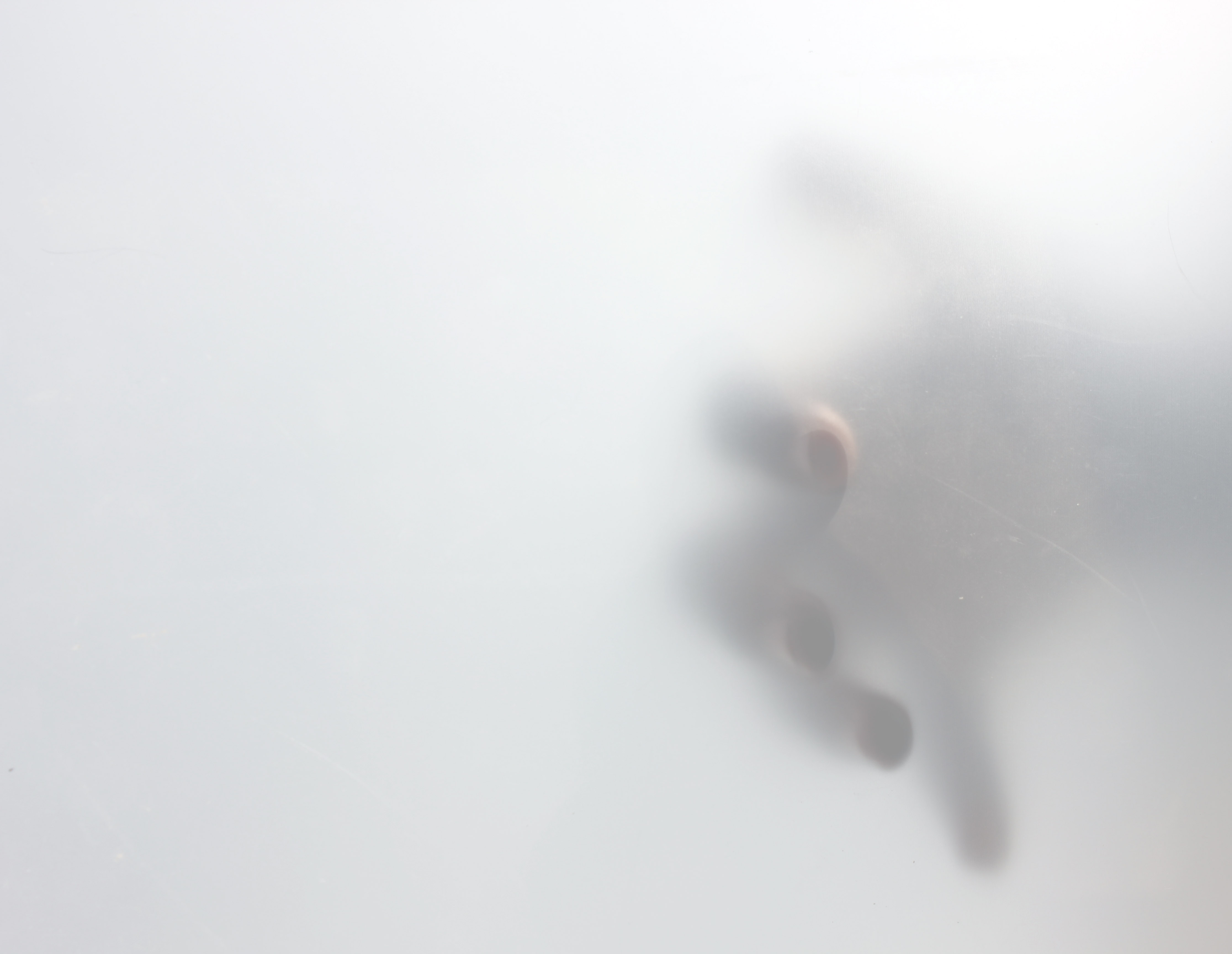
Art offers us an alternative way of seeing the world. We are presented with ideas we can either skim over or delve into more deeply. If we choose the latter, which most great art requires, it slows us down and provokes us to question. When viewing art, it is important to try and be in a very open and conscious state and not to judge too early – much like the attitude we should approach other people with.
How has the Building Bridges project influenced, extended, or changed your thinking and/or your art making?
From the beginning I saw the value of sharing ideas and showing the process of your thinking. Having a platform, for support and feedback to the fluid sharing of ideas between the participants, was invaluable, and very apt in relation to the theme. I would love to work in this manner again in the future. Working on this theme has opened up a lot of questions for me and I feel I have sprouted a wealth of new thinking that will continue into my practice.
------------------------------------------------------------------
Nathi Khumalo Nathi is a Photographer, his work deals most with different social issues, from how families are constructed, to the different effects of globalization through consumerism. Khumalo's has exhibited in a number of group shows: Swedish Innovation 2015; Africa Art fair 2017. In 2017 he won the Brainstorm magazine Calendar competition hosted by ITweb, & was sponsored by an American open software company RedHAt.
As an artist that is aware of the role that colonialism has played in many societies around the world, how do you think art can encourage viewers to challenge and effectively change the skewed perspectives that are a legacy of colonial times?
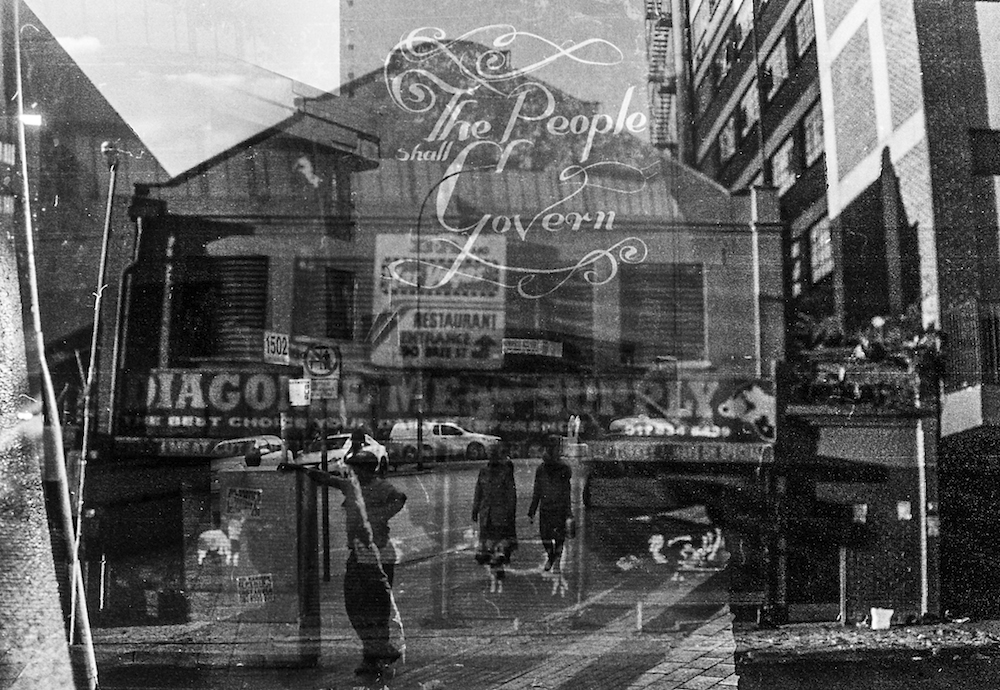
The most important element for me is research. Once we understand our history, and how it currently affects us, we will become a better society. We, as artists, can challenge colonialism by bringing the themes of resistance to its legacy. Art education is important and we need to keep sharing our stories to create a dialogue on where we are now.
How did collaborating and being in dialogue with artists from other parts of the world inspire you?
I think the word collaboration is always linked to certain perspectives. I was hugely inspired by the discussion we had. Just reading other artists’ posts and viewpoints has created a mind shift for me; the way I view my immediate surroundings and environment has changed.
This project has shown me what a fruitful collaboration is, and the power of art as a medium to break the social boundaries.
------------------------------------------------------------------
Pranay Dutta Pranay Dutta (Born 1993) is pursuing a Master's of Visual Arts at the University of Baroda, India. He works at the intersection of gaming, digital environments, found footage, sound and computer-generated imagery. Dutta has participated "Horizon against Nature", Gallery OED (collateral event of Kochi Biennale, 2016) and the 2017 KHOJ International Workshop and residency in Corjeum, Goa.
Inserting urban structures in pristine, natural landscapes, you have created images that arise an eerie feeling in the viewer, stronger than the recognition of the contrast between the two. Was this intentional?
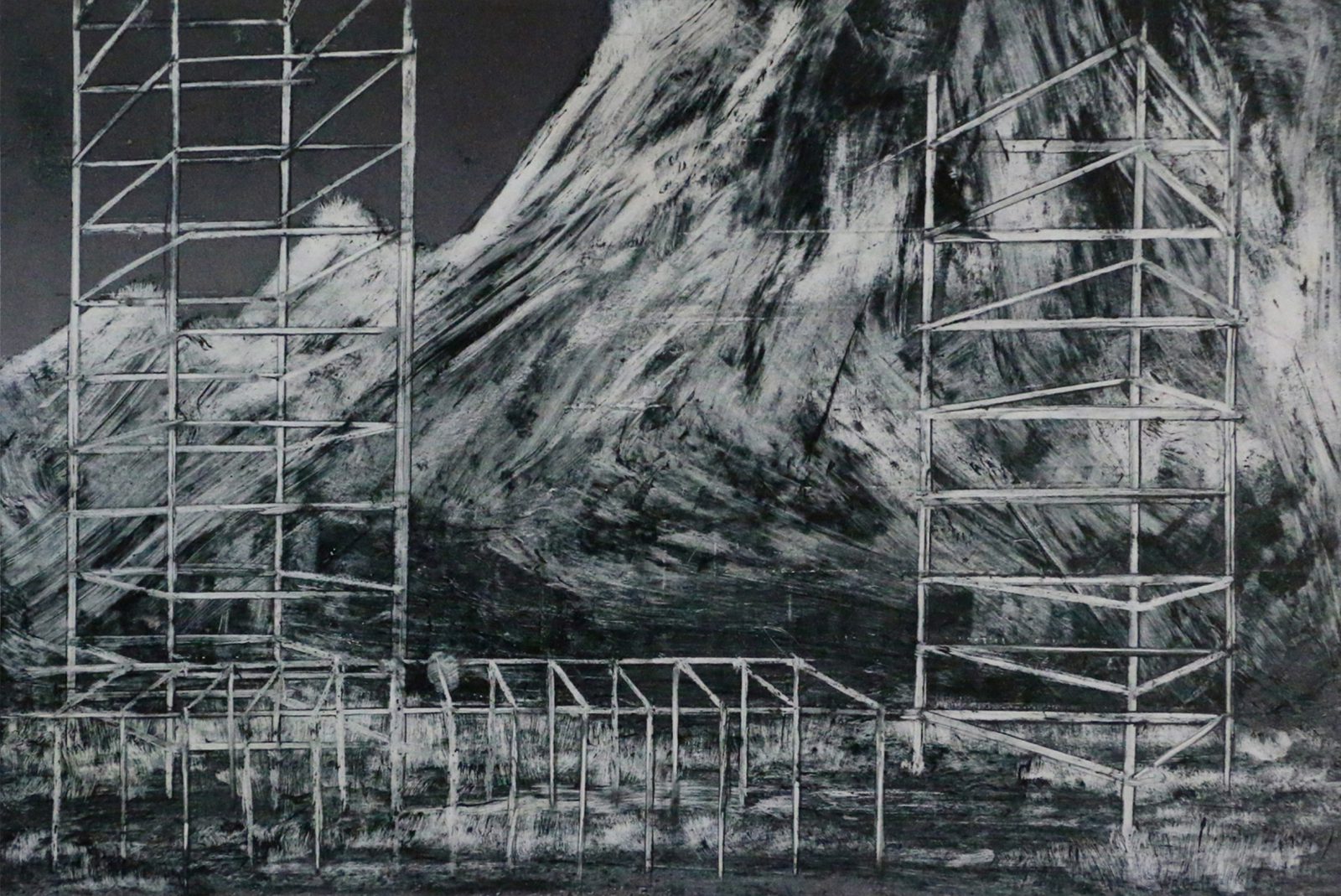
My primary concern was to vision 'Shangri-la' (a site that would probably be the last to be encroached upon) being breached by urban structures and construction. My intent was to create a sense of turmoil on viewing such pristine landscapes being sabotaged. There was a conscious attempt to create a contrast between the organic mountains and the geometric construction setups. Although it wasn't the primary focus. I think working with isolated, desolate landscapes, something that I've always been interested in, is what brings out the eerie in the work.
How has the Building Bridges project influenced, extended, or changed your thinking and/or your art making?
The Building Bridges project was quite interesting. It is probably one of the first projects in India that brought together a batch of artists who are geographically set apart, and gave them a common virtual platform where they could share and learn from each other’s ideas. It acknowledged the impact of technological development in the field of Visual Arts, not only by creating a virtual interactive space, but also by bringing together a wide range of artists who are quite multidisciplinary.
------------------------------------------------------------------
Sarasija Subramanian Sarasija (1992, Chennai, India) lives and works in Baroda and New Delhi. She attained her BFA and MFA in Painting from MSU Faculty of Fine Arts, Baroda. She has participated in several shows and residencies including Archival Dialogues, Mumbai; Città dell'Arte, Biella, Italy; the Dumas Art Project, Surat; the Inlaks-UNIDEE Residency, Italy; Space 118 Residency, Mumbai, and the Interface Residency, Ireland.
Your enigmatic work, decontextualizing and reframing objects with inventive connections, makes one curious. Is your aim to create new entry points? What layered bodies of knowledge and inquiry propel your art practice?

Yes, the primary aim is to invite the viewer to perceive the work at different levels and points of entry. Since the works themselves in one way or another address the rifts and connections between, science, myth and histories, and present the images that weave through, each of these propels my practice – often one taking precedence over the other. In this work, done at the Coral Hatchery (Ireland), for example, the visual triggers do in some ways become most important.
How did the issues or themes brought up by the other artists affect your work?
One of the most interesting themes that was recurrent in both the blogs and the conversations was the one of home, belonging, cultural drift and displacement. These were top of mind, and though it will take time for them to truly seep into my practice, they did drive me to explore the idea of Bred in Captivity in relation to the sense of belonging that one may or may not feel in a space that may in actuality provide everything essential.
------------------------------------------------------------------
Sonam Chaturvedi Sonam Chaturvedi (1991, India), a visual artist living and working in Delhi, India. I've actively participated in various group shows and residencies within India, including residencies at What About Art?, Mumbai, and Utsha Foundation for Contemporary Arts, Bhubaneswar, and group shows including a curated show by Meera Menezes at Bikaner House, Delhi.
Has your work on sound and silence, and in particular their role in the generation of meaning, opened up new interesting perspectives for you?

The sound installation made me think and conceptualize an idea in terms of sound, which changed my perspective towards what and how we listen to our surroundings, how memory is built through the sounds of a place, and how meanings can be molded without visual signifiers. While experimenting with silence and intimacy, I tried creating varied meanings to confuse the memory of the listener. The book becomes another impediment within the already fragmented threads of meanings.
How did the work you have created for the Building Bridges exhibition draw on, influence and/or challenge your thinking and practice as an artist?
This was the first time I worked with sound as the primary medium, thus it was exciting and simultaneously challenging. The biggest challenge was to use sound in a group show where other works were closely knit and I had to maintain the porosity of sound without bleeding into other artists’ works. Visual art is confined to the space it occupies, while sound is difficult to harness. This was overcome with the intimacy of the corner and the small photobook. It changed my approach towards exhibiting.
------------------------------------------------------------------
Souvik Majumdar Souvik (1996) is earning his BFA at the Indian College of Arts and Draftsmanship, Kolkata. He participated in a group project at Kochi-Muziris Students’ Biennale 2016. Souvik’s work is personal, based on old memories, family, body obsessions, complexes, and sexuality. His work ranges from photography and video to painting and drawing.
You mentioned that sometimes you have the desire to tell people things but feel that you are not able to. From your experience, in which ways can art influence your ability to be more open and comfortable with a public?
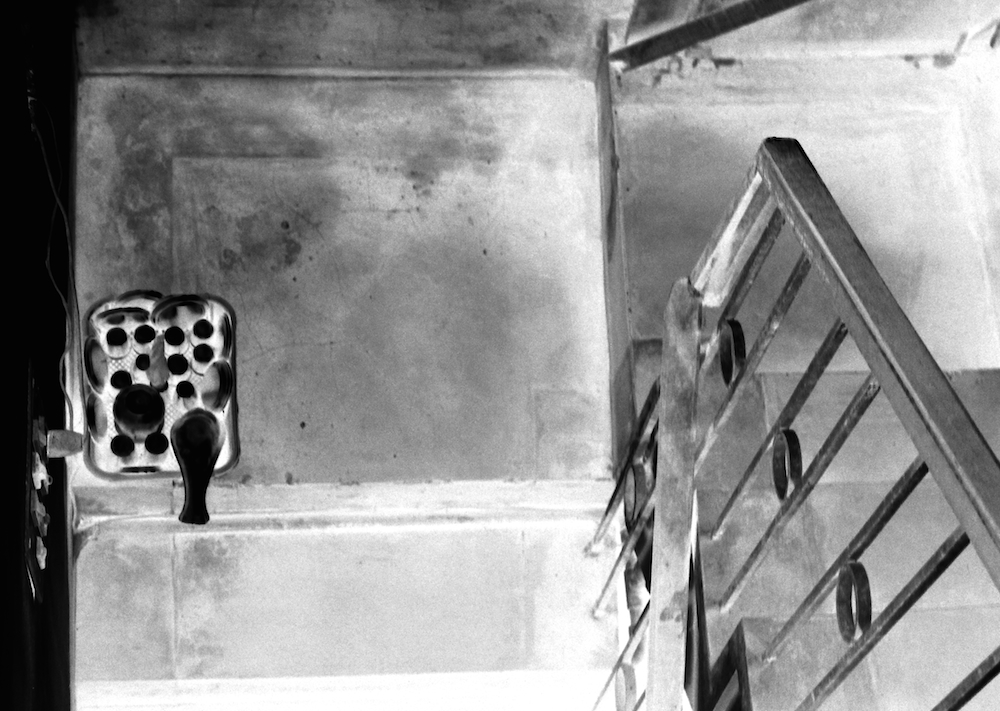
I feel I am not that good at communicating with people using words. Art is a language that I can use to express more in my work. While working I can manipulate, transform, reform, etc. Art is a space where I am free to do anything, and it helps me to be open and more comfortable with myself. I think that through art I can realize certain things and it helps me to know myself more. It sometimes influences my ability to be more open and comfortable with the public.
How did the work you have created for the Building Bridges exhibition draw on, influence and/or challenge your thinking and practice as an artist?
Honestly, this whole journey with Building Bridges has helped me and I learned many new things. The whole process, from the blog post to the show, has changed many things. I started new works because of this project. Somehow they didn’t go with the concepts, or there were many problems, but it has given me different channels or roads where I could experiment. Talking with other artists and with the curator has boosted a confidence that was lacking before. The whole journey challenged my way of thinking.
------------------------------------------------------------------
Tatjana Henderieckx Tatjana (1995, Ha Bac, Vietnam) living/working in Antwerp, Belgium. Tatjana graduated as a Master photography at the Royal Academy of Fine Arts in Antwerp (B). By living in between different cultures (born in Vietnam, growing up in Belgium) she reflects on the topics of belonging and home in her work. Tatjana had several group exhibitions in China and Belgium.
You seem preoccupied with the dominance of stereotypes and the lack of understanding when dealing with people from different cultures. Do you think that art could help foster cross-cultural understanding, in which ways?
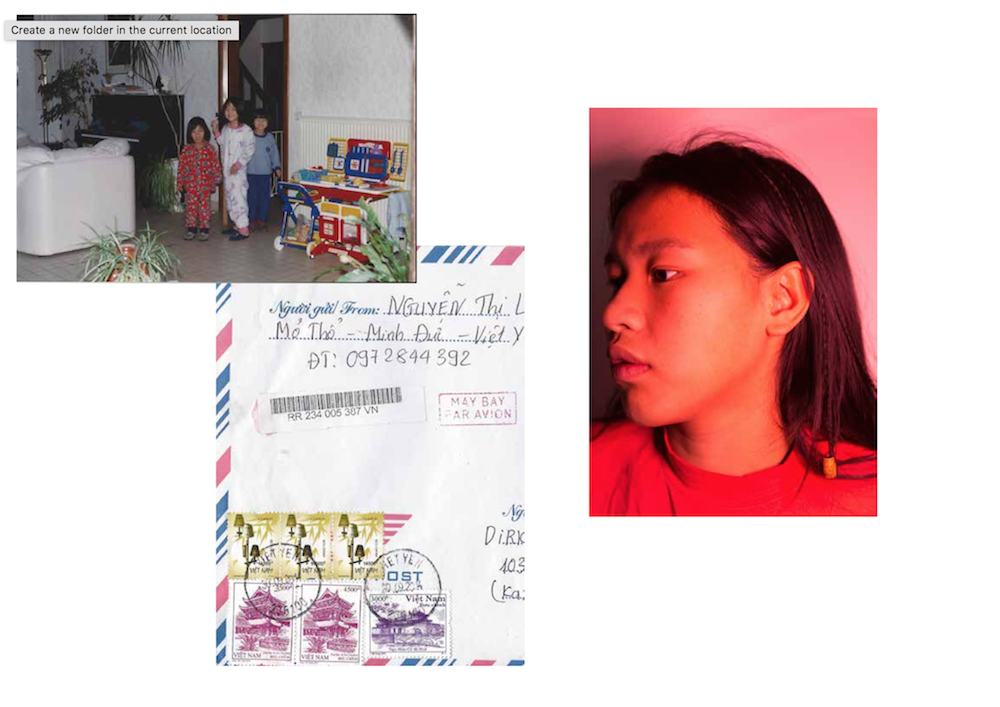
Yes, I see art as a sort of language that does what words can’t communicate because there are different native languages. Often, due to ignorance, we are not aware of misunderstandings. Art is a way to communicate those misunderstandings, because art is something universal. At this point racial stereotypes sadly enough are still going on, and I feel it is my job as an artist living in between cultures to point out the importance of understanding one another.
How did collaborating and being in dialogue with artists from other parts of the world inspire you?
By listening to other opinions, I started to look at art differently. In the West we don’t always appreciate art that comes from the East, and I realized there is, in fact, no reason for it. It is very interesting and inspiring to get to know other cultures by just having a conversation and looking at each other’s work. Those cross cultural art interactions should be done more often to start understanding the world and the persons next to us!
------------------------------------------------------------------
Vishal Kumaraswamy Vishal Kumaraswamy is a multi-disciplinary artist and filmmaker from Bangalore, India. His works have been shown at various exhibitions including The Venice Biennale. More recently, he was an Artist in Residence at the Arcs of a Circle Artist Residency in association with the U.S. Consulate General, Mumbai in Dec 2017.
Strategies of immersion, disorientation and subversion are at play in your imagery and I’ve read about your interest in engaging chaos. How do these countervailing forces combine to inform your work and propel your art practice?
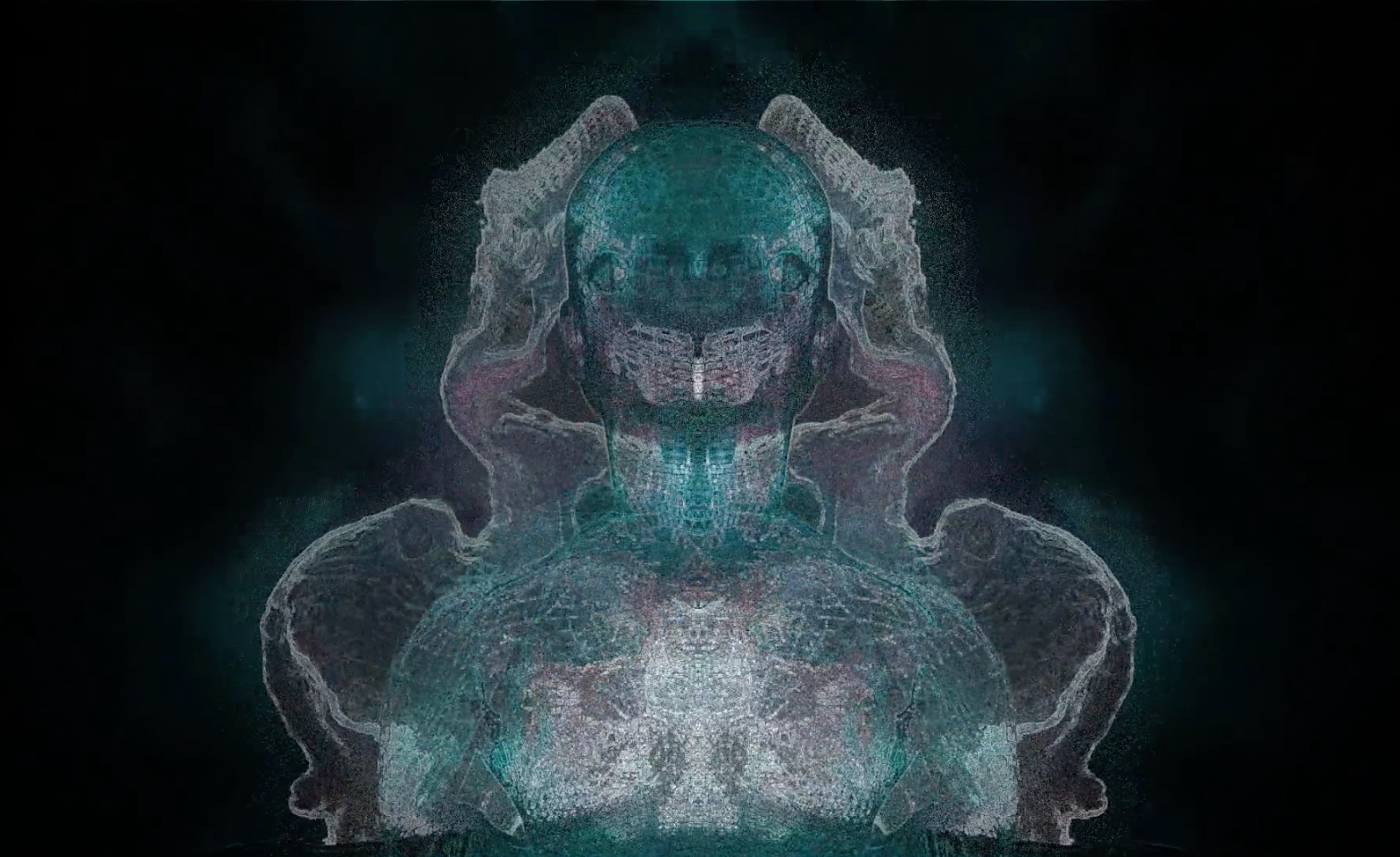
My work draws strands from the tensions that exist when these forces are combined with their resultant propensity to create chaos. This disorder allows me to identify strands that resonate with my current state of being, along with letting my intuition guide those choices. I finally try to detach myself before I can deem a piece of work has satisfied my internal logic. The desire to repeatedly engage with this process is what propels my practice.
How did the issues or themes brought up by the other artists affect your work?
The discourse in itself was extremely enriching. It was very encouraging for our practices to find points of intersection, as well as parallels. The earnestness with which we engaged in dialogue is something that I paid more attention to than the various issues and themes the works address. The need for an open dialogue between emerging artists has never been greater and the generosity of thought is something that has definitely made a mark on my practice.
Many thanks to each and every one of you for sharing your thoughts once again on this platform!
It has been a privilege for Emergent Art Space to be part of this project, which we hope will continue to live on in new and innovative forms...